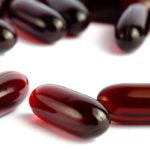Transform Your Body: The Ultimate Fitness Program
This comprehensive fitness program is designed to help you achieve your body transformation goals, regardless of your current fitness level. It combines strength training, cardiovascular exercise, and nutritional guidance to deliver sustainable, long-term results. Remember to consult your doctor before starting any new workout routine.
Phase 1: Building the Foundation (Weeks 1-4)
This initial phase focuses on establishing a consistent exercise routine and building a solid base of strength and endurance. The goal is to get your body accustomed to physical activity and avoid injury.
Strength Training: Begin with full-body workouts performed twice a week. Focus on compound exercises that work multiple muscle groups simultaneously. These include:
- Squats: 3 sets of 8-12 repetitions. Proper form is crucial to avoid knee injuries. Start with bodyweight squats if necessary and progress to using dumbbells or a barbell.
- Push-ups: 3 sets of as many repetitions as possible (AMRAP). Modify by performing push-ups against a wall or on your knees if needed.
- Rows: 3 sets of 8-12 repetitions. Use dumbbells or resistance bands. Focus on squeezing your shoulder blades together at the top of the movement.
- Lunges: 3 sets of 8-12 repetitions per leg. Maintain good posture and avoid twisting your knees inward.
- Plank: Hold for 30-60 seconds, 3 sets. Engage your core muscles throughout the hold.
Cardiovascular Exercise: Incorporate 30 minutes of moderate-intensity cardio three times a week. This could include brisk walking, jogging, cycling, or swimming. The key is to elevate your heart rate and break a sweat.
Nutrition: Focus on consuming whole, unprocessed foods. This includes lean protein sources (chicken, fish, beans, lentils), complex carbohydrates (brown rice, quinoa, sweet potatoes), and healthy fats (avocado, nuts, olive oil). Limit processed foods, sugary drinks, and excessive saturated and unhealthy fats. Aim for a slight caloric deficit to promote fat loss, but avoid overly restrictive diets.
Phase 2: Increasing Intensity (Weeks 5-8)
This phase builds upon the foundation established in Phase 1 by increasing the intensity and volume of your workouts.
Strength Training: Increase the weight or resistance used in your exercises, aiming for 3-4 sets of 6-12 repetitions. Consider incorporating more advanced variations of the exercises from Phase 1. For example, progress from dumbbell squats to barbell squats, or from standard push-ups to incline push-ups. Introduce new exercises to target different muscle groups, such as deadlifts, overhead press, and bench press. Remember to maintain proper form throughout.
Cardiovascular Exercise: Increase the duration or intensity of your cardio sessions. This could involve increasing your running speed, cycling uphill, or incorporating interval training (alternating between high-intensity bursts and periods of rest). Aim for 45-60 minutes of cardio three to four times a week.
Nutrition: Continue focusing on whole, unprocessed foods. Consider tracking your calorie intake and macronutrient ratios (protein, carbohydrates, and fats) to ensure you’re meeting your nutritional needs while maintaining a slight caloric deficit. Experiment with different meal timings and strategies to optimize your performance and recovery. Increase your protein intake to support muscle growth and repair.
Phase 3: Refinement and Progression (Weeks 9-12 and Beyond)
This phase focuses on refining your technique, maximizing your results, and continuing to progress.
Strength Training: Continue to challenge your muscles by progressively overloading your workouts. This means gradually increasing the weight, repetitions, or sets you perform over time. Consider incorporating advanced training techniques such as drop sets, supersets, and rest-pause sets to further stimulate muscle growth. Explore different training splits (e.g., upper/lower body splits, push/pull/legs splits) to optimize muscle growth and recovery. Include accessory exercises to target specific muscle groups and address any weaknesses.
Cardiovascular Exercise: Continue to challenge yourself with varied cardio activities. Explore high-intensity interval training (HIIT) for improved cardiovascular fitness and fat burning. Include activities you enjoy to maintain motivation and long-term adherence. Consider incorporating activities like hiking, rock climbing, or team sports to add variety and fun.
Nutrition: Fine-tune your diet based on your progress and individual needs. Experiment with different nutritional strategies, such as carb cycling or intermittent fasting, to optimize your results. Prioritize adequate hydration by drinking plenty of water throughout the day. Ensure you’re consuming enough micronutrients through a balanced diet or supplementation. Consider working with a registered dietitian or nutritionist to create a personalized plan.
Rest and Recovery: Adequate rest and recovery are essential for muscle growth and injury prevention. Get 7-9 hours of quality sleep each night. Listen to your body and take rest days when needed. Consider incorporating active recovery methods such as light walks or stretching. Manage stress levels through techniques like meditation or yoga.
Important Considerations:
- Proper Form: Prioritize proper form over lifting heavy weights. Watch videos and, if possible, consult a personal trainer to ensure you’re performing exercises correctly.
- Progressive Overload: Continuously challenge your muscles by gradually increasing the weight, repetitions, sets, or intensity of your workouts.
- Listen to Your Body: Pay attention to your body’s signals and rest when needed. Don’t push through pain.
- Consistency: Consistency is key to achieving your fitness goals. Stick to your workout plan and nutrition plan as much as possible.
- Enjoy the Process: Find activities you enjoy and make fitness a sustainable part of your lifestyle.
This program provides a framework for your transformation journey. Remember that individual results may vary, and it’s important to adjust the program based on your own progress and needs. The key is consistency, dedication, and a commitment to making healthy choices. Remember to consult with healthcare professionals before starting any new workout routine or dietary changes.





